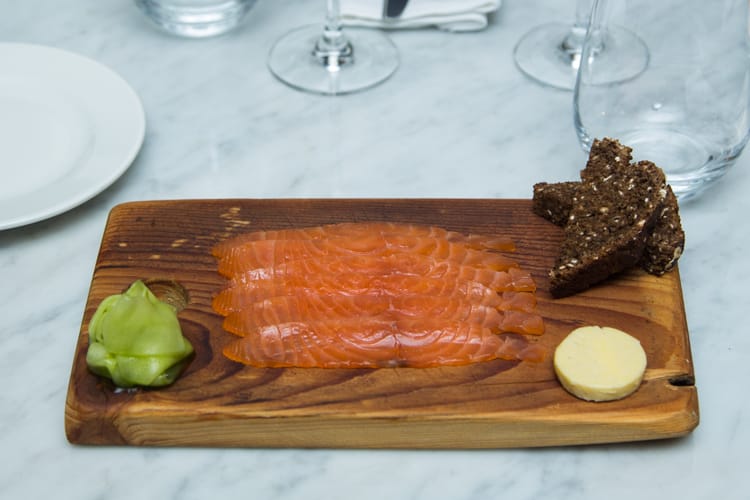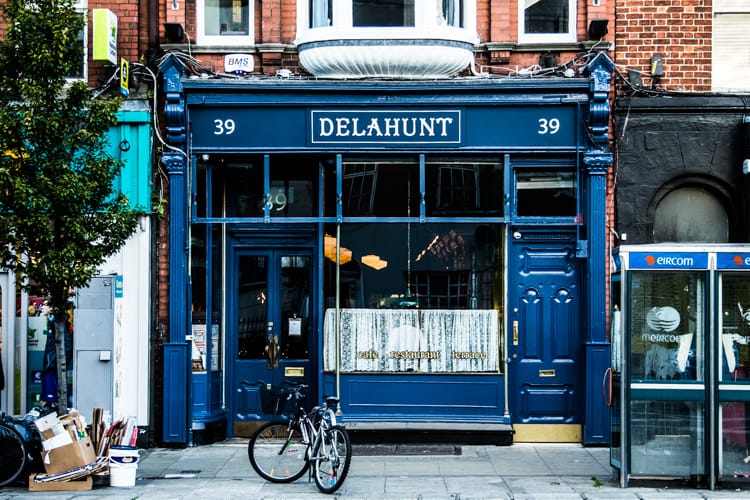What’s the best way to tell area residents about plans for a new asylum shelter nearby?
The government should tell communities directly about plans for new asylum shelters, some activists and politicians say.
The chef at Delahunt restaurant on Camden Street has a collection of antique cookbooks from the 1800s that he turns to for inspiration.

This year’s Michelin Guide held a number of surprises between its covers.
The infamous Thornton’s in the Fitzwilliam Hotel on Stephen’s Green lost its star, which it had held since 1996. As did Bon Appétit in Malahide, which had held the star since 2008.
It was the more low-key, affordable Irish restaurants that fared well last month, with seven Michelin Bib Gourmands being handed out for top-notch, good-value cooking. Ten-month-old Delahunt on Lower Camden Street got one of these.
“You set out to do the best food that you can. Any awards or accolades you get along the way is a bonus,” head chef Dermot Staunton said last week. He didn’t set out to win the award, but it didn’t come as a complete shock; he’d noticed that the Michelin Guide had been tweeting about Delahunt.

Home-smoked salmon with dill-pickled cucumber, horseradish and Guinness bread.
“We were just doing what we do, we didn’t do anything different,” says owner Darren Free, who agrees that the award came about fast.
Staunton puts their success down to the simply structured menu that offers four starters, four main courses and four desserts.
“We get to spend more time perfecting things,” he says. With a larger menu, he believes it would be harder to keep on top of things, and the quality would suffer.
“It’s good having a four-choice menu, because it means I can change it fairly regularly, and I’m not short on ideas,” he adds.
Free spent a long time searching out the venue for his new business venture. He had worked in bars and hotels for years, before going back to college to study culinary arts in Dublin Institute of Technology. And he knew exactly what he was looking for to set up his first restaurant.
“I wanted something unusual,” he says. “Then I found a place that’s been here since 1906. It’s classical, that’s the kind of stuff I like, with the furniture too.”
As he sees it, by investing in this historic building, it won’t become outdated and he won’t have to redecorate every few years. “It’s always in fashion,” he says.
The long wooden bar travels length of the room. It features a pane of stained glass with red berries and green and yellow leaves.

The bar has dints and dents, smoothed out and varnished over, but still visible. The old wooden floors too. The high ceilings mean the grand bar’s shelves tower above head height.
“Everything is original, basically,” says Free. That includes the facade, the bar, the furniture – with the exception of a couple of new additions, like the marble-topped tables and the smattering of modern art.
Between liaising with Dublin City Council and bringing the listed building up to fire-safety standards, it took Free two years to complete its restoration. “It was in really bad condition, but we got it back to the way it was,” he says.
It was during conservation research that he discovered that the building, a former grocer’s, was mentioned in James Joyce’s Ulysses:
“But wait till I tell you, he said. Delahunt of Camden street had the catering and yours truly was chief bottle washer. Bloom and the wife were there. Lashings of stuff we put up: port wine and sherry and curacao to which we did ample justice. Fast and furious it was. After liquids came solids. Cold joints galore and mince pies . . . ”
Though Delahunt no longer serves mince pies and cold joints, Staunton’s menu does feature traditional Irish food and old-fashioned cooking methods that would have been commonplace in Joyce’s time.
“I’m not into any of this technical wizardry,” he says.
Starting out, the kitchen didn’t have every modern cooking appliance. But even now that it does, he prefers to keep things low-tech, with pan cooking, roasting and braising. He also uses old-school ingredients like suet and lard, and employs what he calls “nose-to-tail cooking”, using every part of an animal.
“The type of food that was eaten when James Joyce was around – like liver and onions – they’re a hard sell,” says Staunton. “People have become fussy. With the Celtic Tiger, everybody became used to fillet steaks and the best of everything. But 50 years ago, Irish people were eating tripe and tongue . . . We’re trying to bring that back, but in a more refined way, so that it’s more palatable for the contemporary diner.”

Once Free found his venue, he did a lot of research in the UK and found that some Michelin Star restaurants there are becoming high-quality gastropubs. He thought this style would suit Delahunt.
“I thought there was a niche in the market for that. There’s nobody doing what we’re doing,” he explains.
Staunton jumped at the opportunity to be part of this new style. This is his first head-chef position, and he’s happy to forget about European cuisine for a while to focus on Irish dishes.
He looks to Tom Kerridge and James MacKenzie as good examples of chefs with Michelin Star backgrounds, who have moved on to promoting British produce and suppliers.
“It’s been downtrodden a lot, Irish and British food,” says Staunton. “For the last 30 years, it’s not been good enough or fancy enough, but that’s just balderdash.” He believes people will move away from French-style cuisine for this new, emerging fine dining.
Staunton uses all the techniques he learned during his time in fine-dining restaurants, but only ingredients in season in Ireland. “You won’t see any courgettes or aubergines on the menu here,” he says.
Unlike most of us, he is looking forward to the winter; it’s his favourite time for cooking because all the best Irish ingredients are around, he says. Over the coming miserable months, that means pies, suet puddings and shepherd’s pie.
Summer is more of a struggle, because there aren’t many Irish foods in season. “The furthest I’d go is maybe tomatoes in the summer, because it’s something that can grow in Ireland in the summer, even though it’s thought of as more of an Italian thing,” says Staunton.
He’ll do an Irish take on a Caprese salad, with Irish mozzarella cheese and fried bread instead of croutons.
Delahunt smokes its own salmon all year round. Since opening last December, it’s been smoked with tea. But soon it will be smoked with turf, instead, he said.
Staunton has a collection of antique cookbooks from the 1800s. Occasionally, he uses recipes from them, but most often he just peruses them for research. Back then, England and Ireland didn’t import much, so they’re a good guide for ingredients to use, he says.
One of his books, A Year of Cookery, gives breakfast, lunch and dinner recipes for a family for every day of the year. “I find it’s a good frame of reference for what’s in season in England and Ireland,” he says.
For a week or so after Delahunt won the Bib Gourmand, the restaurant was bedlam. Now, there seem to be more tourists than before, but aside from that, things have gone back to normal. “Business here is really based on regulars,” says Staunton.
Bib Gourmand or not, Staunton and Free have big plans for the future.
In November, they plan to open a new cocktail bar on the first floor, where diners can lounge in comfort before or after their meals. There’ll be bar snacks of pig ears and cold meats.
Having previously dabbled in making Delahunt’s own duck ham, he’d like to set up a space to make his own charcuterie and hams on a more permanent basis
On top of that, Staunton is going to introduce a new mid-week tasting menu in the new year, and plans to continue to research and rustle up traditional Irish dishes even “more religiously”.